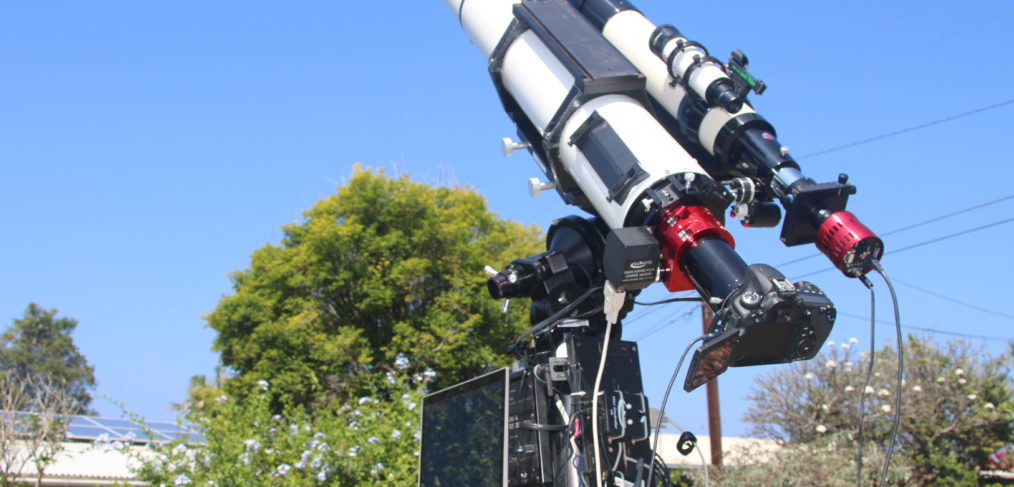
Astrophotography – the next step in Astronomy
After casually viewing the sky with your telescope, the next urge is to take pictures – Astrophotography.
A camera, telescope, suitable mount, and software to process images are the key requirements to do astrophotography.
Digital cameras are rapidly improving.
Cell phone cameras are adequate for Moon, Venus, Jupiter and Saturn images. But, most other deep space objects require a much more serious camera, a DSLR. I recommend an APS-C chip sized camera (approximately, 23 mm x 15 mm) and I recommend Canon Brand. Why APS-C rather than Full Frame 35 mm (36 mm x 24 mm)? Most telescopes that are designed for visual use and are affordable and widely available can only produce an image that will cover that APS-C sized chip. Full Frame 35 mm cameras require very expensive astrograph telescopes designed to cover such a large image size. The extra chip size is wasted on most common telescopes.
Telescope optics must be properly aligned.
Learn to collimate your optics. This mainly applies to reflector telescopes and is very important for image quality. Mirrors are mounted to be free floating and have no stresses imposed on the mirror. They always need adjustments to perform at maximum efficiency. Refractors have the lenses firmly mounted and most require no adjustments at all.
Mounts need to be adequate to the job of astrophotography.
It must be mechanically stable under the weight of the telescope, plus camera equipment and counterweights. The quality of the sidereal gear drive system must be accurate and smooth to cancel out the Earth’s rotation. The German Equatorial mount and the equatorially tilted fork mount are the best designs for astrophotography. They will track the stars with a simple motion and not rotate the image as you track across the sky. German Equatorials and Fork mounts need to be accurately polar aligned in order to track the stars. Autoguider devices are required to correct for irregularities in the gear drives of any mount and compensate for small polar misalignment.
Software puts this astrophotography effort over the finish line.
Digital cameras require software to process raw images into finished products. The sky is littered with over 500,000 pieces of space junk and satellites, thus images can have debris streaking through an exposure. The best strategy is to take many short exposures to add together to increase signal to noise levels. Just discard the ones with the streaks from space junk and meteors. Averaging many short exposures together eliminates noisy background levels and camera noise. Calibration exposures of “Dark Frames” and “Flat Fields” will remove most of the telescope and camera induced defects in an image. A Collection of Software programs to control the mount, camera, autoguider, and store and process the images are widely available at many price points, including free and open source. Scripting software to automate all of this is available and can be used for remote or robotic telescope operation.



